Gallipoli paintings on display in Dublin
Dublin, 26 September 1916 - It is less than nine months since the conclusion of the doomed allied campaign in the Dardanelles, which has proved so costly to Irish life and British military reputation. The campaign in Gallipoli has been described as ‘the most tragic chapter of blunders’ in British military history and in July this year the British Government established a tribunal to investigate the mistakes made in the planning and execution of the campaign.
For those injured or bereaved as a result of that campaign, the mere mention of Gallipoli is certain to evoke a sense of horror and loss. However, now, thanks series of watercolours by G. Drummond Fish, the mention Gallipoli might also conjure images of peace, tranquillity and physical beauty. 'Scenes from Gallipoli' is currently being exhibited at Messrs Cambridge’s Gallery on Dublin’s Grafton Street and we are delighted to reproduce here a selection of the work on display.
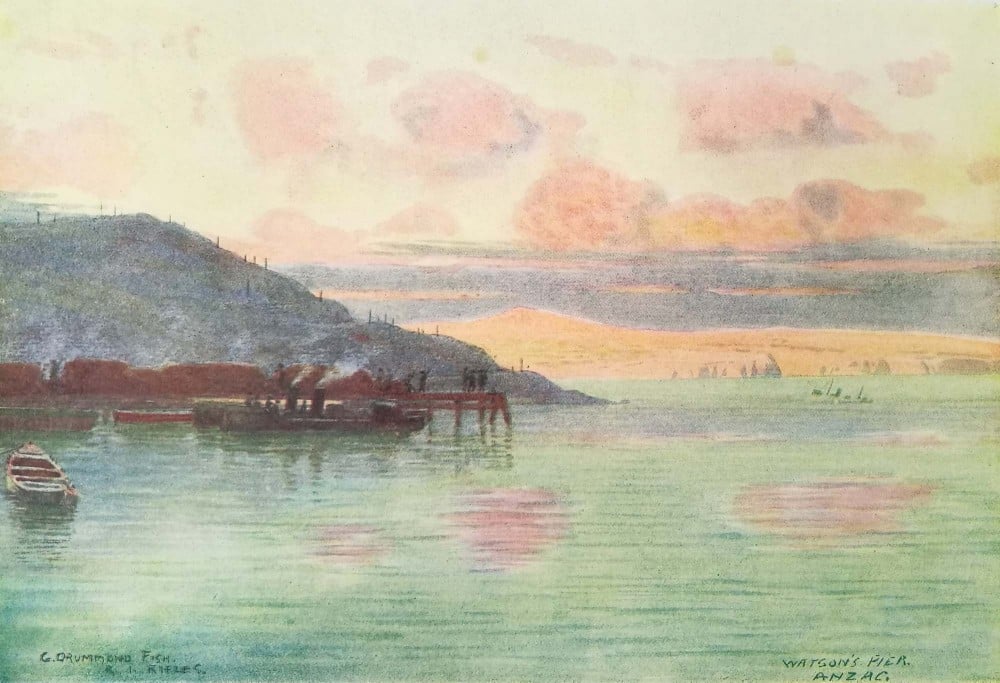
Anzac Cove, where the 29th Brigade of the 10th Divisioin in Gallipoli. (Image: Irish Life, 15 Sept 1916. Full collection available at the National Library of Ireland)
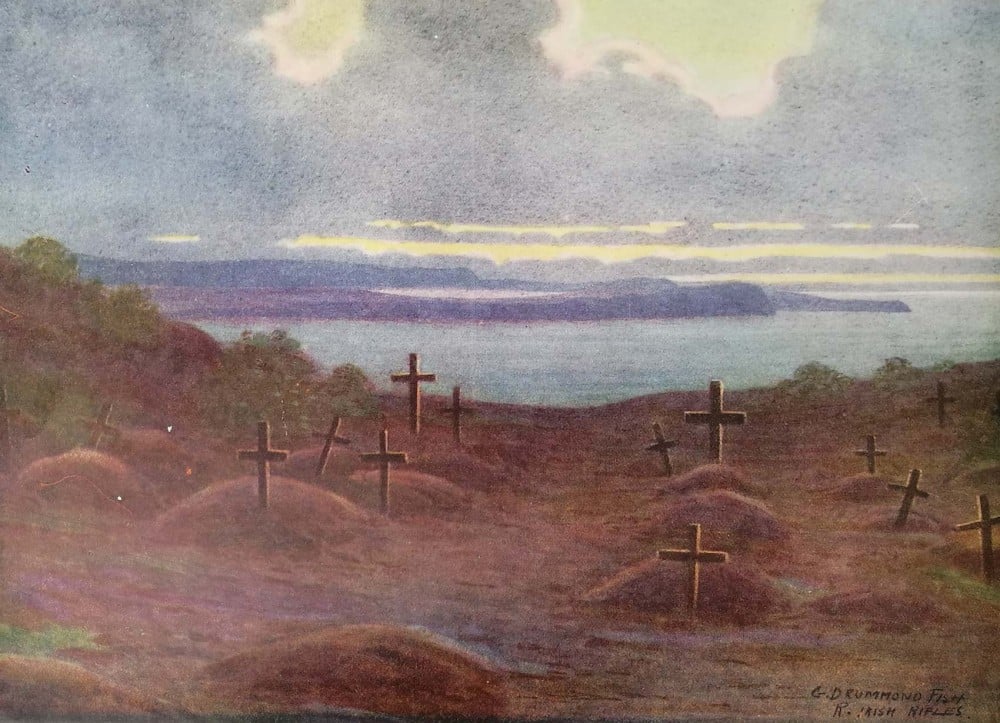
The cemetery at Brown's Dip, situated near Shrapnel Gully (Image: Irish Life, 15 Sept 1916. Full collection available at the National Library of Ireland)
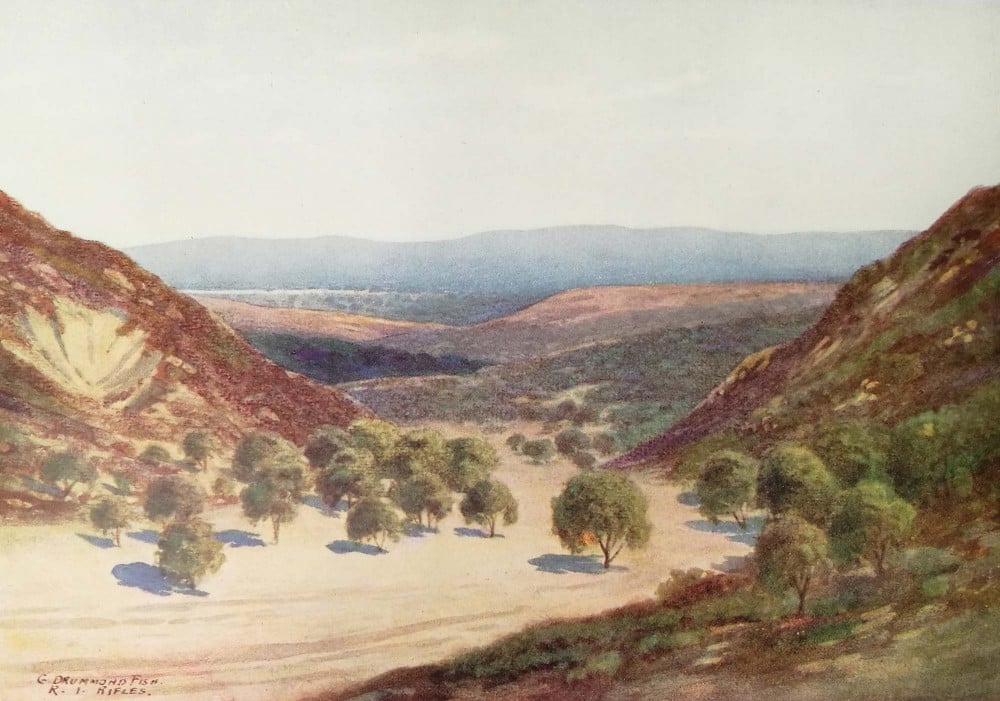
Farm Gully where the Irish troops rested after their attack on Hill 971 (Image: Irish Life, 15 Sept 1916. Full collection available at the National Library of Ireland)
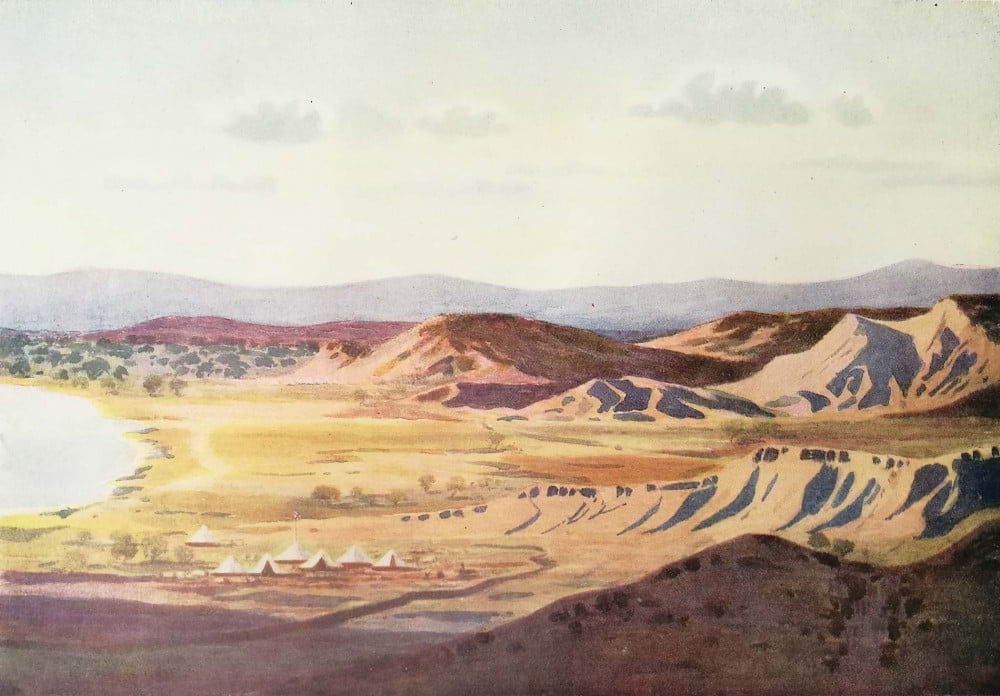
No. 2 Outpost, with Anafarta Plain and Chocolate Hill in the distance (Image: Irish Life, 15 Sept 1916. Full collection available at the National Library of Ireland)
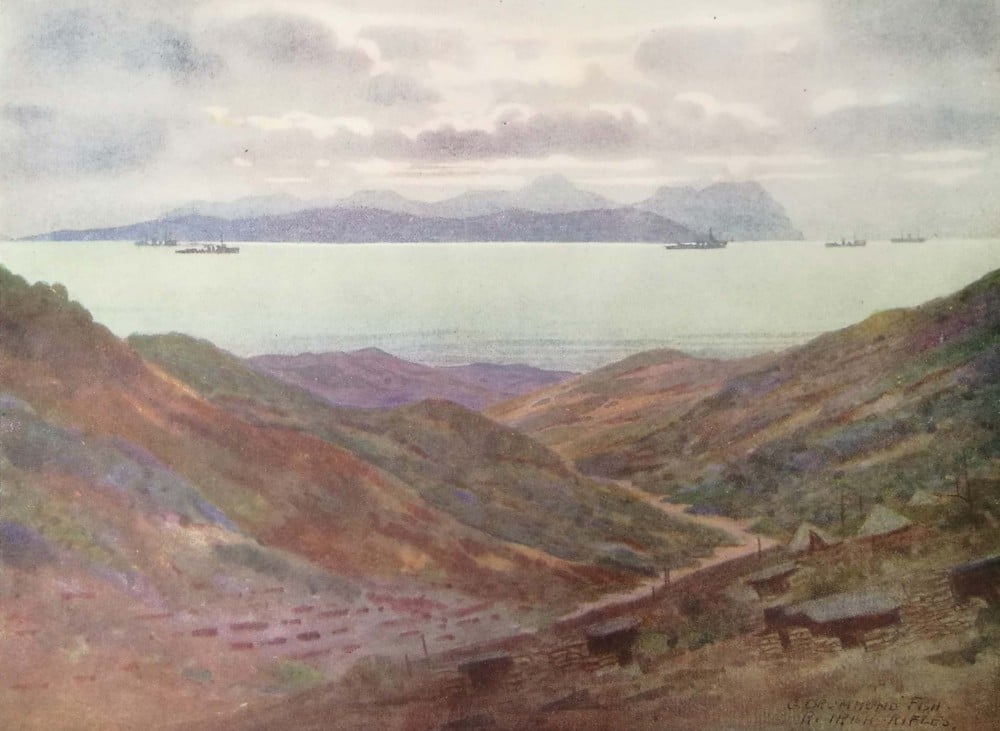
Shrapnel Gully and Imbros taken from Russell's Post (Image: Irish Life, 15 Sept 1916. Full collection available at the National Library of Ireland)

Hill 971, the summit of which was the 'promised land' mentioned by General Ian Hamilton (Image: Irish Life, 15 Sept 1916. Full collection available at the National Library of Ireland)
[Editor's note: This is an article from Century Ireland, a fortnightly online newspaper, written from the perspective of a journalist 100 years ago, based on news reports of the time.]




















